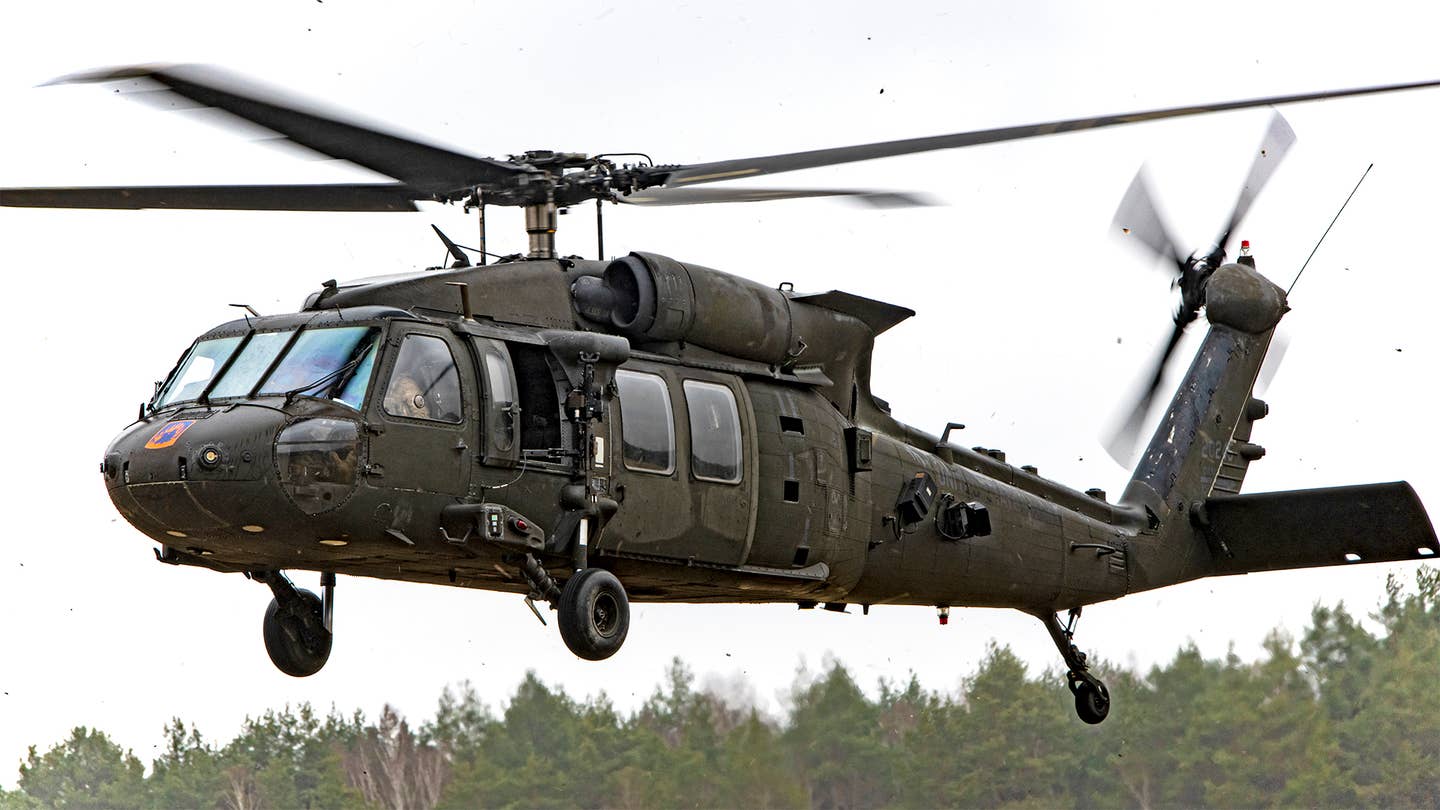Unknown Facts About Uh-60
Wiki Article
Some Of Uh-60
Table of ContentsThe Single Strategy To Use For Uh-60Uh-60 - The FactsThe 9-Second Trick For Uh-605 Easy Facts About Uh-60 Explained
helicopter parts Many helicopters the engine turns a shaft that links to an input quill on the transmission; the primary blades mast comes straight out of the top of the transmission as well as the tail blades driveshaft links to an outcome quill 90 degrees out of the mast. Spinning the rotor which has an aero foil area triggers lift, allowing the helicopter to climb up and down or float.There are several terms associated with rotating wing flight and it is crucial for a trainee to come to be acquainted with them to recognize the auto mechanics of rotary wing trip. The major rotor blade does the same feature as an aircraft's wings, offering lift as the blades rotate lift being among the crucial wind resistant forces that maintains aircraft up.

Just as it performs in a motor car, a helicopter's transmission sends power from the engine to the primary and also tail rotors. The transmission's main gearbox actions down the speed of the major blades so it doesn't turn as rapidly as the engine shaft. A 2nd gearbox does the same for the tail blades, although the tail blades, being a lot smaller, can revolve faster than the primary rotor.
Things about Uh-60
Early helicopters relied upon reciprocating fuel engines, but modern-day helicopters make use of gas turbine engines like those found in business airliners. uh-60. 1. Origin: The inner end of the blade where the rotors link to the blade holds. 2. Blade Grips: Big connecting points where the blades blade connects to the hub.Doing this enhances or lowers the lift that the main rotor materials to the lorry, allowing the helicopter to acquire or shed altitude. This enables the helicopter to move in any type of direction around a 360-degree circle, consisting of onward, backwards, left and also.
Helicopters call for a completely different technique of control than planes and are much harder to grasp. Traveling a helicopter requires consistent focus by the pilot as well as a near-continuous circulation of min control adjustments. A conventional helicopter has its major rotor over the fuselage, simply aft of the cabin area, containing 2 or even more rotor blades expanding out from a main blades head, or hub, assembly.
This swashplate contains one non-revolving disc and also one rotating disc mounted straight ahead. The swashplate is attached to the cabin control stick as well as lever and can be made to tilt in any instructions, according to the cyclic stick motion made by the pilot, or relocated up and also down according to the collective bar activity.
How Uh-60 can Save You Time, Stress, and Money.
The amount of lift generated is determined by the pitch angle (and speed) of each blades blade as it moves through the air. Pitch angle is understood as the Angle of Assault when the rotors are in activity. This pitch angle of the blades is regulated in 2 means jointly as well as cyclically.
Since all blades are altering pitch with each other, or 'jointly', the modification in lift remains continuous throughout every full turning of the blades. Consequently, there is no propensity for the helicopter to transform its existing instructions besides right up or down. The images below show the result of increasing the collective bar on the swashplate and also rotor blades.
Of course, real blades head systems are much a lot more complex than this image shows, yet the fundamentals coincide. The cyclic control is made by relocating the control stick that rises from the cockpit flooring in between the pilot's legs, and can be relocated all directions apart from up as well as down.
More About Uh-60

The pictures listed below show the result of this cyclic control on the swashplate and rotor blades. As the swashplate is slanted, the opposing poles relocate contrary directions. The placement of the rods and also for this reason the pitch of the specific blades is this website different at any type of given point of rotation, therefore generating various amounts of lift around the rotor disc.
As the stick is leaned over in any type of instructions, so the angle of the plate changes extremely a little. uh-60. This adjustment of angle matches straight to what is occurring to the rotor disc at the same time i. e. the side of the plate that is higher stands for the side of the blades disc creating more lift.
This tail blades is utilized to control the yaw, or turning, of the helicopter (i. e. which means the nose is pointing) and also to clarify this we initially require to recognize torque. Torque is a natural pressure triggered by any kind of transforming things and in a helicopter it is triggered by the engine transforming the main rotor blades; when the blades are spinning after that the all-natural reaction to that check these guys out is for the body of the helicopter to start spinning in the contrary instructions to the blades.
Report this wiki page